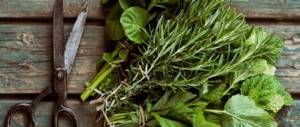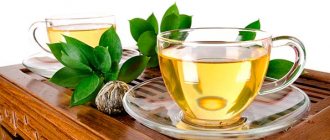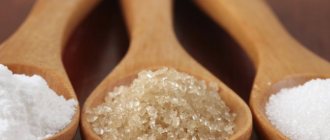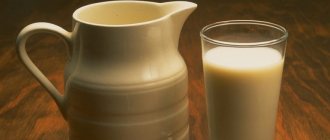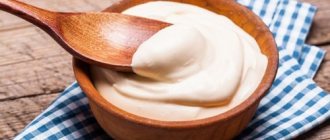Curdled milk is a very common and popular fermented milk product. It is obtained by fermenting milk using exclusively lactic acid bacteria. It’s very simple to prepare: just leave the milk at room temperature for a while. Moreover, both the appearance and taste of the product can vary significantly depending on the recipe for preparing curdled milk in each specific case. So is it possible to use curdled milk for pancreatitis: and how useful will it be for such a disease?
Kefir and kefir products as a component of a therapeutic diet
Kefir and other fermented milk drinks (yogurt, fermented baked milk, bifidok, yogurt) are allowed for consumption outside of exacerbation of pancreatitis. Kefir contains curdled milk protein concentrate, which is easy to digest. In addition, kefir contains lactic acid bacteria, which normalize intestinal microflora. For better absorption, patients are recommended to drink at least one glass of kefir every night (1 hour before bedtime) or include it in the last meal menu.
You can buy kefir at the store or make it yourself at home. To do this, you will need whole milk and kefir starter, which you can purchase at any supermarket. To prepare kefir at home, pour 1 cup of starter culture and granulated sugar into 1 liter of warm milk, mix everything thoroughly and put it away in a warm place overnight. The resulting homemade kefir is consumed throughout the next day.
Curdled milk for acute pancreatitis and exacerbation of chronic
Due to the higher content of lactic acid compared to kefir, yogurt is not recommended to be included in the menu earlier than 3 weeks after an exacerbation. At the same time, you can only consume fresh, daily yogurt, since over time the amount of lactic acid in it increases, the number of beneficial bacteria decreases and there is a possibility of foreign microflora entering it, which can be dangerous.
In addition, when treating an exacerbation of pancreatitis in a hospital setting, you will not be allowed to use homemade yogurt; you will only be able to use an industrially produced product without flavoring additives or sugar.
Cottage cheese and cheeses in a diet for pancreatitis
Cottage cheese and hard cheeses contain the main supply of calcium, which is necessary for the bones, nails and hair of the body. Prepare a cottage cheese casserole or pudding for dinner, adding a piece of low-fat, unsalted cheese. This way you will protect yourself from osteoporosis and other diseases that arise from a lack of calcium.
During the remission phase, you can add low-fat sour cream and cream to whole cottage cheese, garnishing the dish with fresh berries. This dish is best consumed in the afternoon for an afternoon snack or dinner.
Kefir for pancreatitis
Kefir is included in many therapeutic diets and in children's menus.
Is kefir included in diet No. 5p for pancreatitis? Is it possible to drink kefir during exacerbation of chronic pancreatitis, or during pancreatitis in remission? Let me remind you that compliance
Dietary nutrition for pancreatitis is strictly necessary and plays a therapeutic role.
The issue of including kefir in the therapeutic diet for pancreatitis is relevant and requires clarification and discussion. Moreover, there are opposite interpretations in the press:
— some publications write that kefir is contraindicated for pancreatitis,
— other publications recommend including kefir in the treatment menu for pancreatitis.
The analysis of the inclusion of kefir in the therapeutic diet is based on the principles of dietary nutrition for pancreatitis - mechanical, chemical and thermal sparing of the digestive organs (pancreas). Read more about the principles of dietary nutrition for pancreatitis here >>
Next, let's look at how kefir corresponds to the above nutritional principles:
1. The principle of mechanical sparing. Obviously, kefir corresponds to this principle. The consistency of kefir is elastic and does not cause mechanical irritation to the mucous membrane of the stomach and intestines.
2. The principle of thermal sparing. Kefir should be at room temperature. An increase in temperature will lead to thermal denaturation of the protein, resulting in the formation of curd (50-55 degrees). If you have pancreatitis, you should not drink kefir from the refrigerator.
3. The principle of chemical sparing is that foods and dishes that cause increased secretion of the digestive organs (for example, fatty or sour kefir) should be excluded from the diet.
- The first conclusion: kefir should be low-fat or low-fat, since fatty foods activate secretion.
- Second conclusion: kefir for pancreatitis should be weak. What does it mean? — Kefir is divided into three types depending on the ripening time: weak kefir - 24 hours, medium - 48 hours, strong - 72 hours. Strong kefir has a more pronounced sour taste and stimulates increased secretion (juice secretion) of the digestive organs. Weak kefir has a delicate, slightly sour taste and is indicated for pancreatitis. Strong kefir has a strengthening effect on the intestines, weak kefir, on the contrary, has a relaxing effect.
Let's summarize the above: Kefir for pancreatitis is indicated for use and must meet the following requirements:
- kefir should be weak - one day old (ripening time 24 hours);
- low fat (low fat);
- Chilled drinks are not allowed;
- When buying kefir, pay attention to its appearance. The presence of heterogeneous consistency, the presence of lumps or flakes indicates a violation of the technological regime for preparing the drink, improper storage or the expiration of the product's sell-by date.
How to take kefir for chronic pancreatitis
- It is recommended to take 200 ml of kefir 40-60 minutes before bedtime.
- Kefir is used as a dressing for vegetable or fruit salads.
- In therapeutic nutrition for pancreatitis, types of kefir are acceptable - bifidok, biokefir, bifilife, etc., as well as low-fat yogurt.
The exception is fermented milk products containing fruit and berry fillings. These varieties of kefir are enriched with bifidobacteria, which normalize the digestive and protective functions of the intestines, activate metabolic processes, and synthesize B vitamins, amino acids and proteins.
Calorie content of kefir
The calorie content of kefir depends on the fat content and composition of the drink, ranging from 30 to 56 Kcal.
- low fat – 30 kcal (recommended)
- 1% – 40 kcal (recommended)
- 2.5% – 53 kcal (permissible in therapeutic nutrition for pancreatitis in the stage of stable remission)
- 3.2% – 56 kcal (not recommended for pancreatitis)
nutrients per 100 grams of product
- Proteins - 3 g
- Fats – 0.05 g
- Carbohydrates - 3.8 g
- B1 - 0.3 mg
- B2 - 2.19 mg
- C - 33 mg
- Ca - 9 mg
- Fe - 6.9 mg
Kefir for acute pancreatitis
Kefir is contraindicated in acute pancreatitis or during exacerbation of chronic pancreatitis. When leaving the acute stage, kefir is introduced gradually.
- 1 step. Kefir volume = 50 ml (1/4 cup),
- Step 2. Kefir volume = 100 ml (1/2 cup),
- Step 3. Kefir volume = 150 ml (3/4 cup),
- Step 4 Kefir volume = 200 ml (1 glass). This is a state of stable remission.
Each step takes several days, the duration depends on the condition. You can move on to the next step if you experience no unpleasant or painful sensations after taking kefir for several days. Kefir should be low-fat or low-fat (1%). It is unacceptable to combine the introduction of kefir into the diet with another newly introduced dish.
Without a doubt, kefir prepared at home will be healthier than store-bought.
Who shouldn't drink kefir?
- Gastritis with increased stomach acidity. Even one-day kefir (weak kefir) has acidity, the use of kefir should be reduced or eliminated. *
- Diarrhea. Since one-day kefir (weak) has a laxative effect, the use of kefir should be reduced or eliminated. *
*Physician consultation required
How to prepare low-fat kefir so that it meets the requirements of therapeutic and dietary nutrition for pancreatitis and retains its beneficial properties, read about it here >>
Useful properties of kefir.
Conclusion. Low-fat kefir is part of diet No. 5p for pancreatitis and is without a doubt a useful product. Follow the recommendations for its use.
Source: https://pancr.ru/dieticheskoe-pitanie/kefir-pri-pankreatite.html
Milk as a Diet Component
Whole milk in its pure form is strictly prohibited both during exacerbation of pancreatitis and during remission. But starting from the second month after the last exacerbation, milk can be added when preparing dishes.
Milk porridge for breakfast
Rice, buckwheat, oatmeal, corn porridge or porridge from a mixture of cereals are prepared using whole milk. Cereals contain a large amount of B vitamins, trace elements and minerals necessary for the body to carry out metabolic processes. If you have a sweet tooth, add 1 teaspoon of honey or some berries to the dish. You can also flavor the porridge with a piece of unsalted sandwich butter. This breakfast will give you energy for the whole day.
Milk soup for lunch
Milk soups are easily digestible and do not place a high load on the pancreas. For pancreatitis, milk soups are prepared with the addition of:
- Cereals (rice, buckwheat, semolina);
- Vegetables (carrots, cabbage);
- Fruit (apples).
During the early recovery period, the soup is crushed using a blender, giving it the consistency of liquid sour cream. In the late period of rehabilitation, the diet allows whole pieces of vegetables and fruits in soup. When preparing a dish, you can add a teaspoon of sugar for sweetness.
A diet for pancreatitis also involves adding milk when preparing cottage cheese puddings, casseroles and soufflés, egg omelettes and in ready-made tea.
Is it permissible to eat curdled milk if you have pancreatitis?
A disease called pancreatitis is an inflammation of the pancreas. In its treatment it is impossible to do without following the principles of a strict diet, which involves excluding a number of common foods from the diet. So is it possible to have yogurt for pancreatitis?
Curdled milk itself is a valuable fermented milk product that has not only dietary properties, but also considerable nutritional value. It is especially important to note that curdled milk for pancreatitis is an easily digestible and digestible food. Due to these qualities, it is allowed for all patients with inflammation of the pancreas. Moreover, you can drink 1/3 glass every half hour. All those patients who are suitable for such a diet are allowed to drink up to 0.5 liters of yogurt daily.
As soon as the pain syndrome subsides, which is largely ensured by the regular consumption of this fermented milk product, and the pain does not return throughout the day, the patient’s menu may expand somewhat by including a small amount of cottage cheese, but only freshly prepared and low-fat.
In addition, compresses with yogurt are recommended for those people who suffer from pancreatitis. A small linen cloth is thoroughly moistened with preheated yogurt and applied to the left hypochondrium before going to bed. Next, it needs to be covered with compress paper or cellophane, and then bandaged with woolen cloth. After completing all the manipulations, you can go to bed. Such compresses are made from yogurt for pancreatitis every day for four weeks.
Is it possible to drink kefir if you have pancreatitis?
Fermented milk drinks are considered dietary and are recommended for most pathologies of the digestive system.
Kefir for pancreatitis is indicated by doctors not only as a healthy food product, but also as a remedy.
The use of kefir for medicinal purposes in pancreatitis has a number of features, depending on the degree of the disease, as well as concomitant ailments. Not all kefir can be drunk by people with a diseased pancreas.
Composition and properties
100 g of kefir contains 30–56 kcal. Its calorie content depends on how much fat (up to 0.05 g) is contained in the product.
This is the gradation of calorie content of probiotic kefir:
- A product containing 30 kcal per 100 g is considered low-fat and recommended for the treatment of pancreatitis.
- Kefir with 1% fat content is recommended for pancreatitis, which is 40 kcal per 100 g.
- The 2.5% product contains 53 kcal and can be consumed by patients with chronic pancreatitis without an exacerbation.
- A drink with a fat content of 3.2% and 56 kcal is not allowed.
In addition to fats, the product contains:
- animal protein (3 g);
- sulfur;
- B vitamins;
- sodium;
- iron (6.9 mg);
- carbohydrates (3.8 g);
- calcium;
- bacterial cultures beneficial for the intestines;
- potassium (9 mg);
- vitamin A;
- vitamin C (33 mg);
- phosphorus;
- vitamin PP;
- magnesium;
- chlorine;
- vitamin H;
- sodium.
The properties of the drink are very extensive:
- eliminates the urge to vomit;
- fights constipation (weak kefir);
- eliminates frequent and loose stools;
- cleanses the stomach;
- envelops the walls of the stomach, thus calming it;
- eliminates symptoms of digestive disorders;
- prevents pathogenic bacteria living in the digestive tract from multiplying;
- gives a feeling of fullness;
- improves the body's protective functions;
- promotes optimal calcium absorption;
- regulates metabolic processes;
- helps normalize intestinal function;
- strengthens teeth and bones;
- relieves abdominal pain characteristic of pancreatitis.
Having studied the above characteristics of the composition and properties of the drink, the answer to the question of whether kefir can be drunk with pancreatitis disappears by itself. The only thing that should be taken into account is limiting the intake of the drink depending on the stage of the disease.
Use during the acute stage of the disease
The acute form of pancreatitis manifests itself as a severe painful attack. The patient cannot straighten up from the pain, sometimes the body temperature rises, vomiting, diarrhea or constipation occurs. With such pain that occurs during the acute phase of pancreatitis, all the patient wants is to call an ambulance and take a painkiller.
The acute form is treated in a hospital, sometimes even surgical intervention is required. Therefore, it is clear that no one thinks about kefir in this state. Moreover, it is categorically contraindicated in this case.
In the acute phase of the disease, treatment of pancreatitis involves starvation. Only later, after a couple of days, can you take liquid food in the form of decoctions, jelly and other products that are given in the hospital.
Treatment with kefir is allowed much later, after about 10 days.
When the patient's condition becomes stable, he can safely take liquid and steamed food, and he is allowed to consume kefir.
The rules for treating with kefir are strict and must be strictly followed so as not to harm yourself.
You can only drink a low-fat or 1% drink that was prepared no later than 24 hours ago. Initially, the portion should be no more than 50 ml.
If the patient tolerates the product well, the volume is increased by another 10 ml. So, gradually increasing the volume, you can take up to 200 ml per day.
The temperature should be a little warm. You should not treat with a cold drink, as it can be harmful. For any gastrointestinal diseases, drinks should be consumed warm. The digestive system does not like hot or cold food; this disrupts overall homeostasis and causes additional stress, which is not at all necessary in a state of illness.
It is useful to take the drink before bed, an hour before bedtime. You can only have kefir for dinner. Such a light dinner will relieve the feeling of hunger.
In addition, calcium, as it turns out, is best absorbed at night, and the best supplier of this element is kefir, which is even more beneficial than milk.
Use for chronic pancreatitis
Chronic pancreatitis can be asymptomatic, but then a relapse occurs. If the disease is not treated, it can lead to the most tragic consequences, including pancreatic cancer. Therefore, treatment is extremely important, and diet is an integral part of it. Kefir, as part of a diet for pancreatitis, can significantly improve the patient’s condition.
During the remission stage, you can consume no more than 200 ml of kefir per day, taking it as a stand-alone drink or as an ingredient in dishes. Sauces based on kefir are especially popular and varied, as well as as an independent dressing for salads, main and first courses.
If during the period of remission after taking kefir the patient feels worse, drinking the drink should be completely avoided and consult a doctor. Excessive consumption of the drink, more than 200 ml daily, with pancreatitis can lead to a relapse. You should always remember this.
Why you should not consume kefir in volumes larger than 200 ml:
- the gastric mucosa will be irritated (a common cause of pancreatitis is gastritis against the background of increased acidity);
- acidity will increase;
- the condition of the pancreas will worsen due to stomach irritation;
- Excessive gas formation will appear, which negatively affects the condition of the pancreas.
Not any kefir is suitable for a patient with pancreatitis, even in the stage of stable remission. You cannot drink a mature product that has stood for more than a day.
This limitation is due to the fact that in such kefir, due to the active proliferation of bifidobacteria, alcohol is formed. In terms of fat content, the product must be either low-fat or have a fat content of 1–2.5%.
This kefir is more beneficial for digestion. If you drink full-fat kefir, then with such regular errors in the diet, a relapse will certainly occur.
To treat pancreatitis with kefir, special drinks and probiotics are produced. For example, the well-known Biokefir, Bifidok, Acidophilin, Bifilife and many others.
They contain an enriched formula of bifidobacteria.
As a result of their effect on the body, digestion processes are normalized, intestinal function is improved, metabolism is accelerated, B vitamins, proteins and amino acids are better absorbed.
It is recommended to have kefir for dinner. But eating should be no later than one hour before going to bed. If this is not enough, then you can eat buckwheat along with kefir. To do this, you need to fill the buckwheat with this product in advance and let it brew for several hours.
To make the drink seem less sour, you can add sugar, honey, extra virgin olive oil (unfiltered and unrefined). But you need to be careful with oil, since it is fat, you need to consume it in extremely moderate quantities.
Contraindications
Kefir, despite its benefits for pancreatitis, should not be consumed by people diagnosed with gastritis and high acidity of gastric juice. But you only need to exclude an acidic product that has stood for 2-3 days. If kefir is completely fresh, has a neutral taste or is slightly sour, then it can be consumed in more limited quantities.
Weak kefir - “one-day” cannot be drunk with diarrhea, as it will only worsen it. The mature product should not be drunk if you have constipation, as it will aggravate it even more.
People with allergies to animal protein should not drink kefir. To find out if you are allergic to it, it is enough to take an animal protein allergen test.
How to choose
In order for kefir to be beneficial for pancreatitis and not harmful, you need to be able to choose it wisely. It is necessary to familiarize yourself with the composition of the product. It must be made from either whole or pasteurized milk.
There should not be any normalized or reconstituted milk in the composition. Milk mushrooms must be specified as a starter. There absolutely cannot be any oils, especially palm oil, in kefir.
It should be thick in consistency, homogeneous in structure, without lumps.
Source: https://kiwka.ru/pankreatit/kefir-2.html
Why kefir is useful: pancreatitis in the chronic stage
When the condition of the pancreas is stabilized and stable remission is achieved, the daily volume is not increased. Unlike other foods and drinks, the volume of which is gradually increased during chronic pancreatitis, kefir remains the same - 200 ml. Nutritionists claim that a larger volume can lead to acidification of the stomach contents, have an irritating effect on the organ mucosa, stimulate fermentation processes, cause flatulence and other unpleasant symptoms of pancreatitis, and generally worsen health.
However, there are still some changes in taking kefir compared to the acute form of the disease:
- The fat content of fermented milk drink can be increased to 2.5%.
- You can consume kefir not only before bed, but also as a daytime meal.
- Kefir is not only an independent dish, but also serves as a dressing for salads or side dishes.
- It is allowed to add a little oil and sweeteners to kefir.
The expiration date deserves special attention. Naturally, you should not buy expired products under any circumstances. The greatest benefit will come from fresh, one-day-old kefir. But after three days, the fermented milk drink will go from being healthy to dangerous, since the ethyl alcohol content in kefir will increase. Such kefir will not only bring nothing good, but will also aggravate the condition of the pancreas.
Nutritionists point out that in addition to classic kefir, you can enrich your diet with derivative drinks, which, in addition to the starter culture, contain bifidobacteria: bifidoc, bolact, bifilife, biokefir, etc. The main thing is to purchase these fermented milk drinks without berry or fruit components.
Kefir is a fermented milk product that is widely known for its dietary properties, has almost no restrictions on consumption and provides the human body with many useful substances.
Thanks to its use, patients with pancreatitis can receive the required amount of animal protein, which is indispensable for the normal functioning of the pancreas. It also contains certain microorganisms that normalize the intestinal flora and its working functions. But, despite this, kefir for pancreatitis must be drunk carefully and follow all advice and instructions for its use in order to avoid negative consequences.
How is kefir useful for a patient?
This fermented milk product contains lacto- and bifidobacteria, which prevent the proliferation of pathogenic bacteria in the body and normalize the intestinal microflora. The protein in its composition is easily absorbed by the body, so kefir drink serves as the main source of nutrition for patients on a protein diet.
The drink contains essential vitamins and microelements. Regular use helps improve immunity.
Contraindications
Kefir has a considerable number of beneficial properties, but it is not recommended for gastritis of the stomach and excessive production of hydrochloric acid, as it can cause additional complications in the body.
Currently reading: What cutlets can you eat for pancreatitis: recipes and reviews
Consuming kefir for pancreatitis requires choosing a quality product with a shelf life of no more than 3 days. It is best to choose a drink with a slight sourness and take it in a normal dosage without exceeding the permissible amount.
Kefir is also contraindicated if you are allergic to animal protein. To confirm suspicious symptoms, special testing is necessary. If detected, completely exclude products containing the allergen from the general diet.
Beneficial properties of natural fermented milk drink
Among fermented milk products, kefir occupies a leading place in terms of usefulness due to the special leaven that is used for its preparation. While some products from this series may not be suitable for someone due to medical indications, this drink is universal and has virtually no contraindications. It saturates the body with potassium and calcium, has a beneficial effect on vision, and thanks to its vitamin A content, the condition of the skin improves. It is also rich in vitamin D, which promotes calcium intake and phosphorus absorption.
According to the recommendations of nutritionists, kefir is indispensable in medical nutrition. It is widely used to combat excess weight. This diet is well tolerated by patients, it is safe and occurs without consequences.
This product can have varying degrees of fat content, but drinking it is useful for everyone because, first of all, it has a positive effect on the functioning of the entire digestive system, does not strain the pancreas, and normalizes intestinal functions.
| Fat content, % | Calorie content per 100 grams, kcal. |
| 3,2 | 56 |
| 2,5 | 50 |
| 1 | 40 |
| 0 | 30 |
Values and virtues:
- Contains many essential vitamins and microelements. The main ones are calcium, magnesium, phosphorus, vitamins C, group B, A, PP and others.
- Calcium is absorbed quite well when consuming the product, much better than through conventional dairy products.
- The beneficial bacteria found in kefir have a beneficial effect on the digestive organs, treat intestinal microflora, and normalize the functions of the gastrointestinal tract.
- Constant intake of fermented milk product will significantly strengthen the immune system.
With all these positive qualities, patients are increasingly wondering whether kefir is good for the pancreas during pancreatic inflammation.
Kefir and chronic pancreatitis
Pancreatitis is characterized by inflammation of the pancreas, the treatment of which, along with taking medications, also involves a therapeutic diet. Kefir in such a diet is considered as a product that has a gentle effect on all digestive organs.
The patient's diet has the following features:
- The consistency of the drink is uniform, melting, and does not injure the mucous membranes of the stomach and intestines.
- Kefir is consumed warm, otherwise when it is heated, cottage cheese is obtained. If you have inflammation of the pancreas, you should drink kefir no colder than room temperature.
- This product comes in low-fat, medium-fat and full-fat varieties. To avoid exacerbations of the disease, high-fat products must be excluded from the patient’s diet.
Depending on the stage of ripening, kefir is divided into:
| View | Maturation period | Properties |
| Weak | 24 hours | It has a slightly sour taste and can be drunk for pancreatitis. |
| Average | 48 hours | Medium acid product |
| Strong | 72 hours | It has a pronounced sour taste and causes strong secretion of gastric juice; it is not recommended for pancreatitis. |
What kefir is allowed for pancreatitis? The answer is one that meets the relevant indicators:
- The product is considered only weak when the ripening period is no more than a day;
- Low fat or low fat;
- Drink the drink only warm;
- If a heterogeneous mass, lumps and flakes are observed in kefir, this indicates a violation of the manufacturing technology or that the product is spoiled, or its expiration date is close to expiration. Under no circumstances should you drink this product.
In the presence of chronic pancreatitis, it is recommended to drink 200 ml of kefir in the evening an hour or two before bedtime. It can also be used as a dressing for vegetable and fruit salads. Dietary food allows the use of biokefir, bifidka, low-fat yogurt, but the exception is drinks with various fruit additives and chemical components.
During exacerbation of the disease
During an exacerbation of pancreatitis, the patient urgently needs a strict therapeutic diet for several days, and ideally fasting and drinking plenty of fluids. This is due to the fact that the main function of the pancreas is the production of enzymes that process and break down nutrients that enter the food tract. But during an exacerbation, normal functioning fails, the ducts and channels close and enzymes can damage the tissue of the pancreas itself. All this can negatively affect the condition of the mucous membrane and lead to its separation.
If food does not enter the body in large quantities for some time, this will make it possible to reanimate damaged pancreatic tissue. This is why therapeutic fasting is necessary. Many patients are concerned about whether it is possible to drink kefir during acute pancreatitis, if it is so useful at other stages?
Nutritionists recommend that even low-fat kefir can be drunk no earlier than the tenth day after the onset of an exacerbation. And even after this period, the drink cannot be introduced immediately. At first, the patient should take 50 ml of the drink for several days, then 100 ml, then 150 ml, and only after making sure that the person’s health does not deteriorate can he be allowed to drink 1 glass a day.
Drink during remission
After passing the exacerbation stage, the patient enters a moment of remission. It is then and under the condition of good health that kefir with a slightly higher fat content, for example, 2.5%, is allowed to be introduced into the diet. Nevertheless, the maturity of the product should be daily, because an older drink contains more ethyl alcohol. The volume of the drink consumed should not exceed one glass, since large doses can cause irritation of the mucous membrane, bloating of the intestines and disruption of the stability of the digestive organs.
During the period of remission, kefir and pancreatitis are concepts that go together normally. At such moments, you can drink a fermented milk product not only at night, but also during the day, or make various dressings from it. In the future, it is allowed to sweeten the drink with honey and sugar, and add olive oil to it. Products with beneficial bifidobacteria are also not prohibited, but preferably in their pure form without additives.
Kefir and the pancreas will interact normally with each other if the rules are followed when consuming the product - drink it no more than a glass per day and only fresh. And kefir prepared independently will be much healthier than store-bought.






